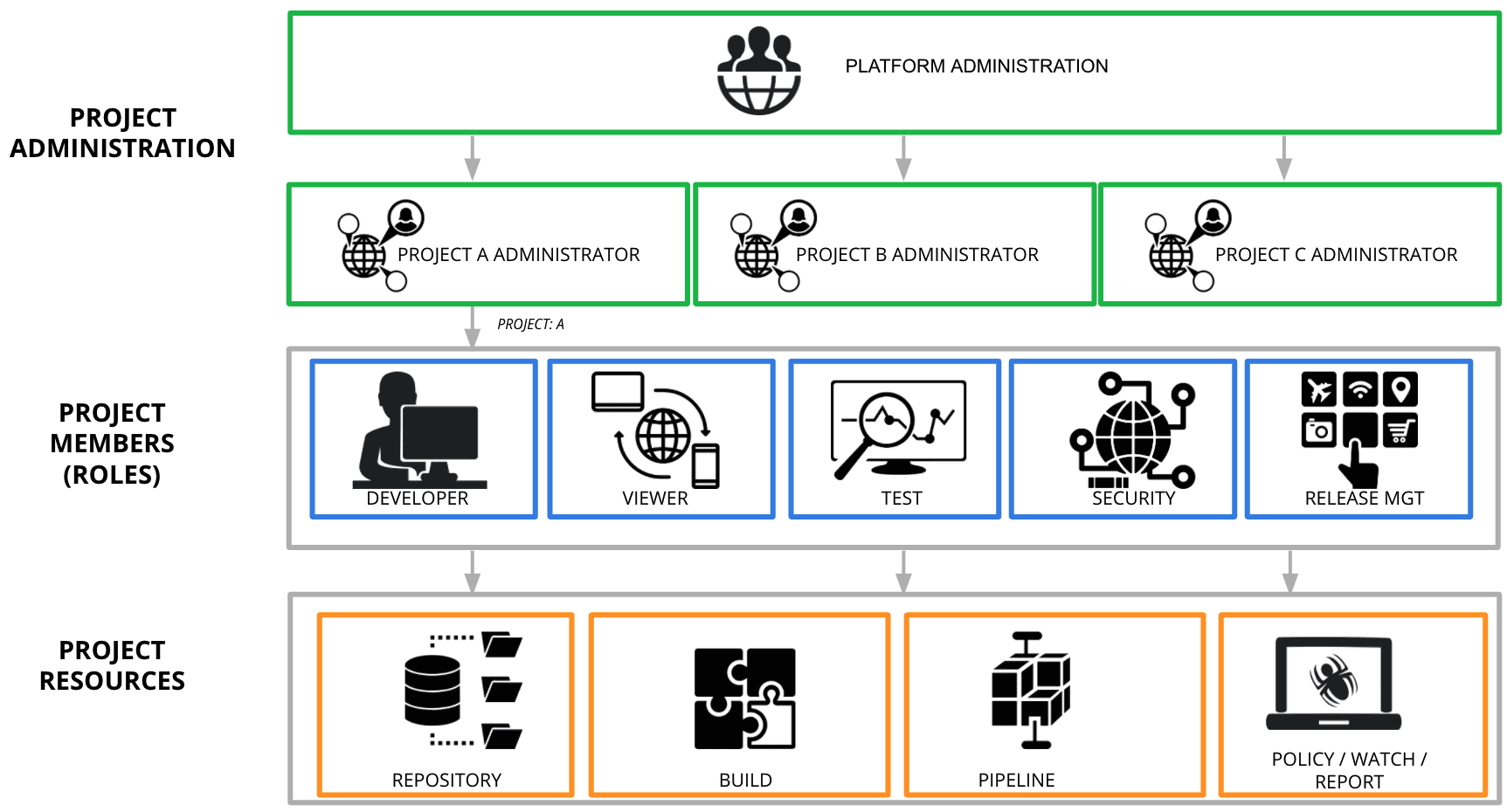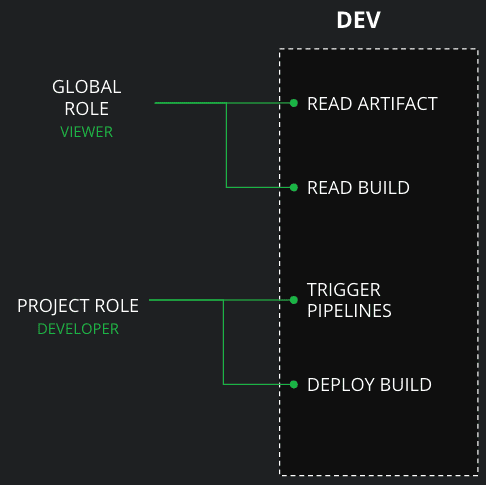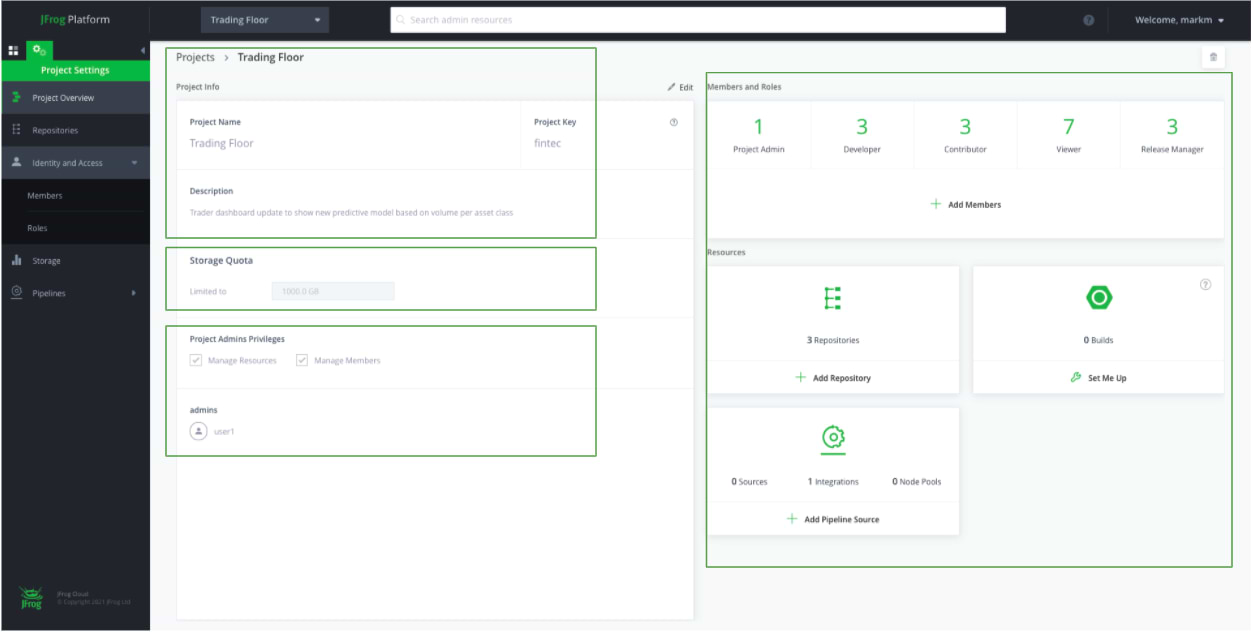3 Ways for Administrators to Scale DevOps Projects

With the global pandemic transforming the majority of customer interactions and transactions to operate in a contactless world, software development has accelerated to address the market shift towards digital businesses. For many enterprises managing this increase in volume and velocity of development projects has added stress to their processes and workforce. With this increased workload, system administrators are faced with the challenging task of scaling the onboarding each development project with the right team members, resources, permissions and thresholds to continue to drive efficiencies.
Managing and Scaling DevOps Projects
JFrog Projects was designed for larger enterprise organizations that have a complex web of package managers, repositories, registries, Helm charts and dependencies and are looking for solutions to:
- Scale the number of development projects to accelerate the digital business.
- Remove the bottleneck of platform administration for new project creation.
- Provide local management of team members, roles and resources at the project-level.
- Simplify the onboarding of development and test teams to new projects.
DevOps administrators can become a bottleneck when hundreds or thousands of DevOps projects are active. JFrog has taken the approach to enhance the agility and scale of software projects by delegating day to day functions from the platform level down to the individual project level.

JFrog Projects – Role Based Access Control
Role-based access control (RBAC) solves the challenge of scaling DevOps projects across enterprise projects, organizations, and business units. With role-based permissions, a developer can be allowed, for example, to deploy artifacts only in pre-defined DEV (development) environments and not PROD (production) for example.

JFrog Projects – Preconfigured DEV Environment
By delegating administrative tasks from the platform-level to the individual DevOps project-level, development teams can quickly onboard to preconfigured DEV or PROD environments and start contributing right away. By enabling project teams to self organize, with admin control to add team members with granular RBAC, with assigned resources and permissions at each stage through the pipeline, from development to production JFrog Projects is scaling DevOps.
1.0 Self Service
JFrog Projects solves the developer challenge of being assigned to multiple software projects and manually having to configure each environment and request the right level of privileges for each one. DevOps project administrators can pre-assign DEV or PROD environments, to enable the development teams get started quickly, and maximize their time on coding.
Software developers can also start new projects with allocated resources to simplify their onboarding and get to coding faster. Within their predefined DEV or PROD environment, they can expect a standard set of tools such as: package manager, artifacts (eg. images, dependencies), builds, pipelines and global search ready for them.
For the DevOps Project Administrator, the following screenshot highlights a project called ‘Trading Floor’. This Trading Floor project has 1 project administrator, 3 developers, 3 contributors, 7 viewers and 3 release and deploy leads, with 3 repositories and 1 pipeline integration pre-configured so the team can get started.

JFrog Platform – Admin View of a New Project
2.0 Easily Manage Software Projects
As cloud-first applications and microservice architectures become the modern pattern for scale, one impact to the SDLC is the increasing velocity of software releases, as each microservice has its own code base, and can be independently deployed, upgraded or replaced. To support this accelerated lifecycle, DevOps projects themselves must be agile and more autonomous to quickly onboard development teams with the resources they need to start coding quickly.
JFrog Projects solves the challenges of scaling distributed development projects with;
- Easy set up of new development projects and assignment of team members and resources, with storage quotas, all through a simple UI.
- Ensuring compliance with project-level data separation and access to information between different projects/teams/departments, while using a common platform setup.
- Extended administration UI for easy configuration of new role-based access and permissions.
- Newly introduced Platform and Project admin roles with permissions to manage resources globally and project admin for specific projects.
- Additional project roles, such as viewer, contributor, developer, and release management; and CRUD permissions of resources such as packages, builds, artifacts, pipelines and global search throughout the CI/CD DevOps pipeline.

JFrog Platform – Trading Floor DEV and PROD Repositories
- With predefined environments for DEV (development) and PROD (production), Project Administrators can quickly get the team up and running.
3.0 Efficient Resources Allocation
Managing Project Level Storage Thresholds
From a resource management perspective, one of the key resources users target for cost reduction is storage.

JFrog Platform – Managing Storage Thresholds
JFrog Projects provides enhanced visibility into the storage consumption patterns at a project level, allowing Platform administrators to assign specific storage limits for each project. Project leads know what they have to work with and can kickstart code development quickly, as well as manage usage patterns for optimized performance.
Get started with the JFrog Platform today, start for free >




